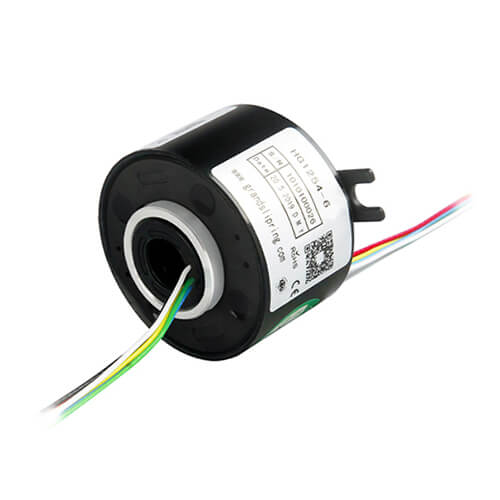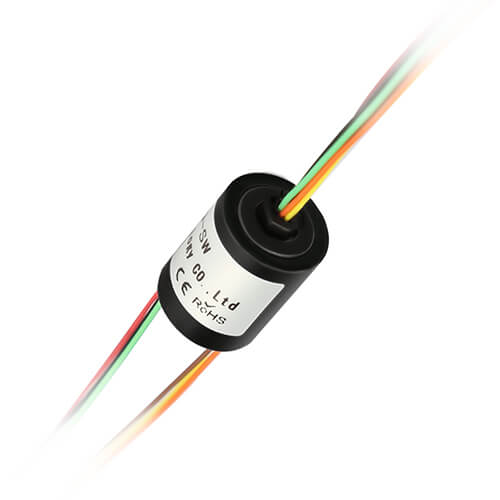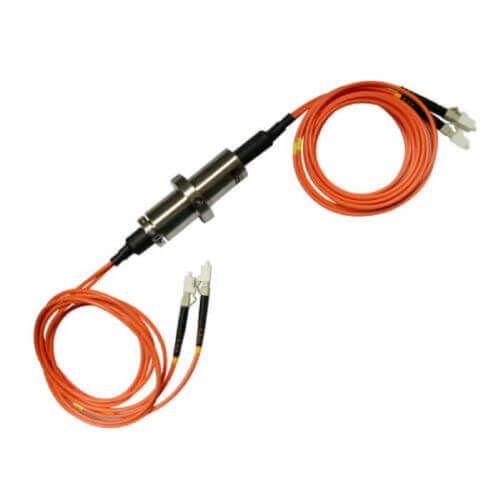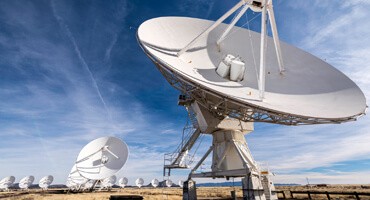Slip rings, also known as rotary joints, are electromechanical devices designed to transmit power (electricity), data, and other signals between static and rotating parts of the machinery. Essentially, wires can do the job, but they would get tangled, especially if the joint is making infinite rotations. Slip rings allow the communication of power data using fixed brushes that slide against a rotating metal ring to complete conductivity.
Typical Slip Ring Prominent Parts
A typical slip ring has two prominent parts, as follows:
1. The Stator (Fixed Part)
The stator is the fixed component in a standard slip ring. They are brushes made using carbon graphite via fiber brush technology. The brushes are also plated using silver, gold, or other durable metal or alloy depending on the application.
2. The Rotor (Rotating Element)
The rotor is a rotating metal ring, usually made using metal alloy and coated for longer-lasting contact surfaces. The rotor will be different depending on the type of slip ring and its application specifications. A full slip rig kit will also contain other structural parts, including all the mounting and screws.
How Slip Rings Work
In a typical slip ring, fixed brushes contact the rotating ring to complete the transmission of signals. Manufacturers use two techniques to achieve signal transfer. In the first method, the brushes brush against a rotating centerpiece, while in the second, fixed brushes are attached to a rotating housing and brush against a fixed metal ring. These electromechanical devices are provided for one primary function, which is to communicate signals between rotary joints. The signal transmission will depend on the application. Some slip rings can transmit power (electricity) signals only, while others can transmit, data, optical, and USB signals. Signal transmission is completed when the brushes contact the metal ring.
Types of Slip Rings
Many systems feature rotary joints that require the transmission of various kinds of signals. From satellites and aircraft to wind turbines, offshore cranes, electric generators, and smart toys, slip rings have broad applications that span several industries. They are also designed to work in specific equipment and operating environments. Some of the common types of slip rings available in the market include:
1. Through-hole Slip Rings
Through-hole slip rings get their name from the unique design that features a hollow space at the center. Space is provided to accommodate channels and also allows free shaft movements. Through-hole rotary devices are used in applications that require high voltage and heavy liftings, such as mining and drilling equipment. They boast a more durable mechanical structure and can have single or multiple channels. You can also find models that transmit power only or both power and data signals.

2. Pancake Slip Rings
Pancake slip rings are other popular rotary joints, used in several industrial applications. As the name suggests, these slip rings assume a characteristic disk-like flat pancake shape, ideal for installation in narrow spaces. Pancake slip rings are provided for applications that have limited vertical space but have a bigger horizontal room. They are popular in automobile showrooms, wind turbines, offshore cranes, and other systems. Because of their applications, most pancake slip rings are designed to transmit both power and signal.

3. PCB and Miniature Slip Rings
PCB offers a lightweight, durable canvas ideal for miniature slip ring models required for tiny rotary joints. However, not all PCB slip rings are miniature, which refers to all small, lightweight slip rings used in narrow space slip ring applications. They are used in smart toy models, such as helicopters, turntables, and other tiny rotary joints. PCB slip rings use a printed circuit board that carries all the channels and specifications required for the rotary joint.

4. FORJs and USB Slip Rings
Fiber optic rotary joints (FORJs) are designed for transmitting optical signals and come with the inherent advantages of fiber optic technology. They have a unique application in medical equipment and monitoring systems. They offer durable slip rings that can achieve high-speed data transmission but lack the properties to survive harsh environments. USB slip rings are designed to communicate USB signals and come with varying specifications for Ethernet, video, and power transmission. They are unique to applications that require transmitting data signals, such as CCTV cameras and broadcasting systems.

Uses of Slip Rings
Slip rings transmit signals from a fixed to a rotating part, or vice versa. All slip rings are designed for one primary function, which is to establish power and signal transmission through rotary joints. However, some motors, such as standard DC induction motors, feature slip rings that are used to insert resistance, rather than conduct signals. Primarily, any application that requires conducting signals through a joint making infinite 360° rotations can benefit from a slip ring. The stator brushes against the rotor and slides, eliminating the need for winding wires.
Each slip ring is designed for a unique application. As such, slip rings are highly customized electromechanical devices, with few standard models. Popular brands offer common slip rings for standard equipment specifications, so you can find slip rings for wind turbines, electric generators, or motors that meet these requirements. However, it is essential to send a comprehensive instruction that includes all the unique specifications needed for the slip ring. Some of the popular uses of slip rings include:
- Electric generators and motors
- Wind technology (turbines, monitoring, etc.)
- Auto showrooms
- The manufacturing industry in packaging equipment
- Satellite and microwave antennas
- Military and mining equipment
- Smart toys and robots
- Electric rotary joints and more!
Conclusion
Slip rings are necessary joints inseparable from most systems where they are used. These devices are used in many applications and are always customized with features meant for the unique operating environment. As such, you should communicate all details to the manufacturer so the design can be tailored to your needs. For instance, slip rings installed outdoors will require weatherproofing, insulation, advanced anti-abrasion, and other augmented specs to withstand the wear elements within its operating environment. Make sure you purchase devices from reputable manufacturers and vendors. More importantly, focus on finding the precise specifications for your equipment and use.
See What We Can Do

